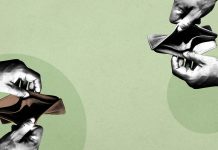Financial literacy does not mean that you have to fully understand all the complex processes of the market and skillfully invest in assets. This term refers to general knowledge and habits that give you a clear understanding of how to manage money wisely, where to save, and when you can afford to spend. Let’s take a closer look at the main components of financial literacy.
Definition of Financial Literacy
Many people get finance knowledge not at specialized training courses but from personal experience. You have to cope with a lack of money, pay bills, create small savings, learn to adapt to a changing situation, and much more. So, classic financial literacy meaning implies a set of knowledge, skills, and habits that help you cope with all these tasks.
What is money management? This term describes a complex of various processes that are related to finance. It usually includes budgeting, spending, saving, accounting, investing, etc. It can find application in the lives of individuals, investors, households, and large companies. Each level has its characteristics, but they all lie in the skillful money handling and awareness of the consequences of your actions.
Understanding how to become financially literate lies not only in learning the basics of budgeting and saving but also in learning how to put them into practice. Also, you should be ready to stop yourself from impulsive purchases, realizing that you need to achieve larger goals. Apart from that, you also need to understand the importance of having an emergency fund and creating retirement savings.
How to Improve Your Finances?
Proper cash flow management is essential because it is needed literally every day. Learning financial literacy allows you to allocate money so that you don’t live at your limits.
Money in the bank
Your bank account and debit card are your starting points for mastering the basics. Synchronize them with any budgeting app and connect various subscriptions and recurring transactions to make payments for the services you need on time. All information about the balance and flows is in front of your eyes. You can track receipts and purchases and adjust habits and budgets depending on your current goals. The best option is to open two accounts to which you can distribute finances according to your needs. The next step is budgeting.
Budgeting process
Understanding how to make a budget plan for yourself or your family is the next “brick” in your financial foundation. Thanks to it, you can avoid extreme financial situations, live in peace, and plan your future. Accounting for income and expenses, as well as their adjustment, is necessary for:
- identifying your strengths and weaknesses;
- cutting costs;
- searching for additional sources of income;
- creating emergency funds;
- development of plans to get out of the debt pit;
- categorization of needs and their gradual satisfaction.
Although budgeting for a single person or family is not difficult, you can turn to professionals for personal financial advice. They will conduct an expert assessment of your condition and, depending on your goals, help you create a budget plan.
Basics of Personal Finance
What are the basics of finance? There are a few key money management and budgeting tips that work in any situation:
- Track all income and expenses. You can do it manually, but it is much easier and more convenient with the help of specialized services like Saldo Finance.
- Identify your needs (vital and fixed expenses) and wishes (costs you can do without).
- Summarize. Monitor your cash flow for two to three months and then evaluate it. This period is enough to identify unnecessary expenses and find ways to save.
- Build savings. Set aside a certain amount right after receiving a salary. Once it becomes a habit, find ways to turn that money into dividends.
- Create a budget. Based on the previous points, you should form a plan and stick to it daily.
Having mastered personal literacy, you will be able to move to a higher level and effectively interact with banks and other financial institutions. Knowing the main monetary processes and instruments allow you to set realistic goals and confidently go towards their achievement.
Disclaimer: This article contains sponsored marketing content. It is intended for promotional purposes and should not be considered as an endorsement or recommendation by our website. Readers are encouraged to conduct their own research and exercise their own judgment before making any decisions based on the information provided in this article.
































































